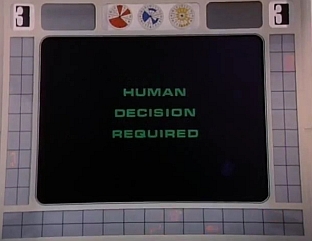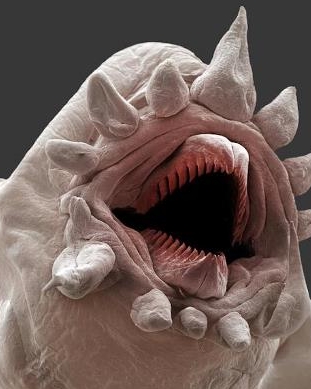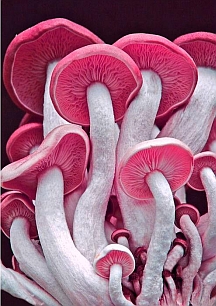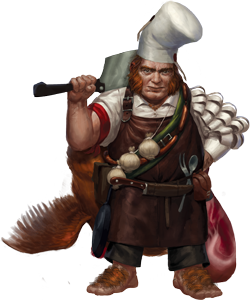Human Decision Required
 In preparation for Tiamat’s Throne, I’ve been doing research into science fiction. Most recently, this has meant watching Space: 1999 on YouTube. While I am old enough to have been alive, walking, and talking when this show first aired in the mid-70s of the last century, I seldom watched it. Back then, Mom determined what we watched during prime time, and that didn’t include this British-import sci-fi series.
In preparation for Tiamat’s Throne, I’ve been doing research into science fiction. Most recently, this has meant watching Space: 1999 on YouTube. While I am old enough to have been alive, walking, and talking when this show first aired in the mid-70s of the last century, I seldom watched it. Back then, Mom determined what we watched during prime time, and that didn’t include this British-import sci-fi series.
For those of you not in the know, the first episode, “Breakaway”, recounts events leading up to a massive explosion in a lunar nuclear waste storage facility that knocks the Moon out of orbit and sends it hurtling through space toward adventure. Space: 1999 is wildly improbable if not downright silly, but it is played out with such gravitas by good actors such as Martin Landau (as Commander John Koenig) that there is something compelling about the show, no matter how absurd some of the plots are.
At the end of “Breakaway”, Koenig orders that Moonbase Alpha’s computer process how to execute Operation Exodus given the new parameters of the Moon no longer being held in the Earth’s orbit. The computer explains that new parameters exceed its ability to determine whether it is possible to abandon the Moon and return to Earth. Ominously, it declares that a “human decision” is required. Koenig provides that decision, commanding that no escape attempt will be made from the Moon, thus setting up the whole careening-through-space premise of the series.
Something struck me while watching “Breakaway”. One of the common complaints about certain RPGs is that the player characters end up being little more than the sum of their equipment. Solutions to scenario problems become less about the characters and more about having the right gizmo. I’ve seen this play out many times, and the results are often less than satisfying. I’ve also seen situations where the players deliberately try to hinge their success on elements external to their characters.
For example, I once ran a short-lived Mutants & Masterminds campaign. The first plot arc the heroes confronted involved a serial killer preying on adults who victimized children. What I had planned on being a sort of mystery/police procedural quickly turned into the tech hero sitting in front of a keyboard and using a combination of search engines and hacking to gather information. While this certainly fit the hero’s schtick, it didn’t make for exciting roleplaying. I didn’t GM the situation well, and for an unnecessarily large hunk of play time, most of the other players had little to do but feed the tech hero’s player suggestions about the next thing to type into Google.
Which leads me back to Moonbase Alpha’s computer. When we start playing Tiamat’s Throne circa February 2013, I want to avoid the problems associated with over-reliance on tech. At the same time, I don’t want to hamstring character options. If a player makes up a tech-skill heavy character, that player deserves to use those skills in meaningful ways. This must mean that adventures be crafted so that player decisions are required. No just feeding a bunch of data into a computer and then letting the machine make the decisions. Technology should assist, not replace, player character actions to the greatest extent possible.
As my players (well, one of them) have expressed interest in a Firefly-esque campaign, concerns about over-reliance on technology seem even more relevant. It is appropriate that tech assist the player characters in their various heists and capers, but the tech shouldn’t remove the dramatic tension.
Consider a common plot element in heist stories: stealing vital data from a computer. What I don’t want is for a single Computer skill check to accomplish this task. That’s not how it works in the genre. Instead, the heisters have to get into the facility somehow, evading security, slipping past checkpoints, entering secure areas, et cetera, in order to get to the computer system, at which time the Computer skill check comes into play, preferably with a complication, such as the head of security showing up for a surprise inspection or a mishap in another area triggering lockdown protocols.
 As I mentioned in my previous post (see below), work on Tiamat’s Throne has slowed down a bit. I hope to remedy that next week when I’m off for Thanksgiving. (Huzzah! to my pilgrim forefathers.) Until then, here’s another beast for my
As I mentioned in my previous post (see below), work on Tiamat’s Throne has slowed down a bit. I hope to remedy that next week when I’m off for Thanksgiving. (Huzzah! to my pilgrim forefathers.) Until then, here’s another beast for my  Another one from the xenobestiary for Tiamat’s Throne, my
Another one from the xenobestiary for Tiamat’s Throne, my  The first demi-human race I’ve rough-drafted for
The first demi-human race I’ve rough-drafted for 